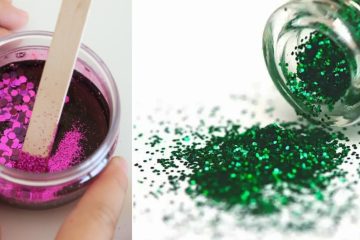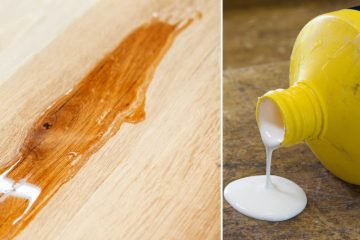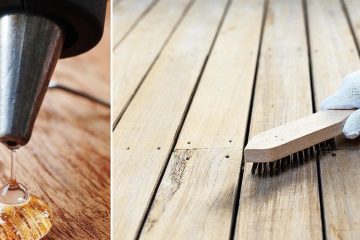As a do-it-yourself warrior, you’ve likely had your fair share of plumbing mishaps resulting in annoying PVC glue spills on clothing. While plastic piping cement keeps those PVC pipes sealed tight, it creates an aggressively stubborn bond with fabric too. Have no fear – that beloved t-shirt or cozy sweater can be rescued! With some clever techniques and elbow grease, you can get PVC glue out of any garment. This detailed guide compiles wisdom from experienced DIY’ers who have tackled their fair share of adhesive stains. Follow these methodical steps on how to remove pvc glue from clothing.

Key Takeaways:
- Act immediately on wet spills before glue penetrates the fabric
- Harden-dried glue by freezing garments for easier removal
- Use solvents like acetone sparingly to dissolve glue remnants
- Gently scrub with brush and rinse thoroughly before washing
6 Simple Steps for How to Remove PVC Glue From Clothing
Here are the steps for how to remove pvc glue from clothing:
Step 1: Act Fast!
When dealing with any fabric stain emergency, time is of the essence. As soon as you notice wet PVC glue on clothing, take quick action before it penetrates deeper into the fabric weave. Use a spoon, dull knife, credit card edge, or even your fingernail to lift and scrape away as much excess adhesive as possible. Avoid rubbing it in further.
Step 2: Freeze the Garment
If that pesky glue spill has already dried, the next tactic is to harden it even more to allow for easier removal. Place the clothing item flat in a ziplock bag, ensuring the glue stains face upwards. Pop it in the freezer and leave for 1-2 hours until frozen solid. The reinforced icy glue will now flake off more readily when disturbed.
Step 3: Chip Away at Frozen Glue
Retrieve your stiff, frozen garment and place it on a protected surface like cardboard or wood. Arm yourself with a plastic scraper, spoon handle, or blunt butter knife. Gently chip and scrape at the hardened glue residue to dislodge pieces without damaging the underlying fabric. Flicking crumbs of frozen glue with the scraper takes patience but prevents harming delicate threads.
Step 4: Bust Out the Solvents
For stubborn glue residue still clinging to fabric post-freezing, it’s time to deploy the solvents! Chemical solvents dissolve the stubborn adhesive so it releases its tenacious grip on fibers. Acetone, nail polish remover containing acetone, Goo Gone or even rubbing alcohol make excellent pre-treatment options.
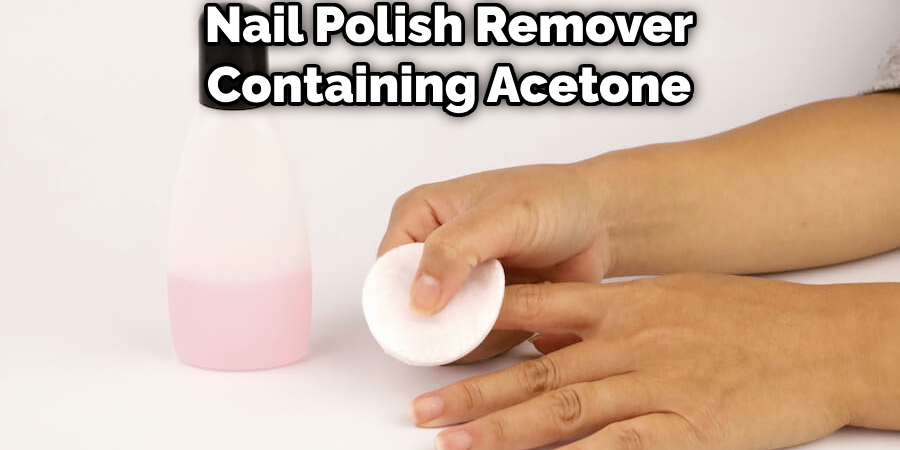
First, check clothing tags and test any solvent on an inconspicuous area like an inner hem. Once confirmed safe for the fabric, dip a cotton ball in the chosen cleaner and dab it onto the remaining glue residue. Allow 2-5 minutes of soak time before gently blotting away – this gives the solvent time to penetrate and soften the adhesive’s hold.
Step 5: Grab a Brush and Gently Scrub
After solvent application, grab an old toothbrush, scrub brush, or other abrasive brush. Lightly scrub the fabric in a circular motion to work the solvent into threads. This added bit of mechanical friction helps stubborn PVC cement relinquish its grip so embedded glue can be brushed free. Take care not to vigorously scrub more delicate materials at risk of damage.
Step 6: Rinse Extra Thoroughly
Post glue removal, thoroughly rinse away all solvent residue under warm running water while gently scrubbing with your hands. Inspect carefully under bright light to ensure no remnants linger before laundering as usual with mild detergent. Borax or washing soda can be added to the wash for extra degreasing power.
It’s crucial to remove all traces of cleaner before drying otherwise stains risk getting permanently set by heat. Your clothing should now look fresh-faced and glue-free! Skip the dryer and line dry for added peace of mind.
You Can Check It Out to Keep PVC Glue From Drying Out.
4 Alternative Solutions for How to Remove PVC Glue From Clothing
If dealing with PVC piping disasters on surfaces other than clothing, there are a few additional solutions:
Solution 1: For vinyl floors
Glue can be conveniently peeled off the nonporous vinyl surface soon after spillage while still moist. For dried adhesive on vinyl, apply nail polish remover or Loctite glue remover as directed to loosen the bond for easy removal.
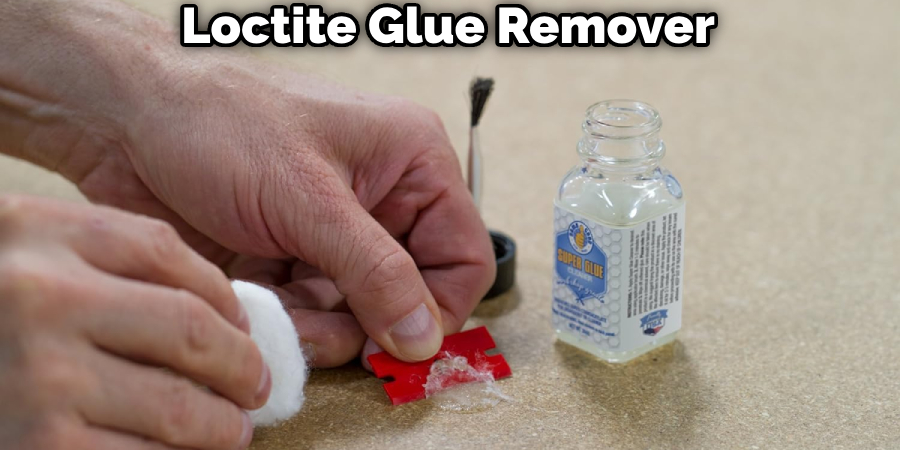
Solution 2: For PVC pipes
Wet excess glue can be simply wiped away with a cloth. But for dried glue, use an acetone-dampened rag to gently dissolve and wipe up remnants. Be aware that once fully cured, the original PVC cement chemically welds pipes – at that point, the joint may need to be cut out and replaced.
Solution 3: Choose a forgiving glue formula
To avoid future sticky situations altogether when working on projects, select a “repositionable” glue designed to be easily wiped up during the working time window before full curing. Loctite offers versatile, fast-bonding formulas that give you 60 seconds to tidy up any spills.
Solution 4: Protect nice garments
Instead of risking your favorite clothes, cover up with designated old t-shirts and pants reserved just for messy DIY work involving glue or other tenacious materials.
You Can Check It Out to Remove Glued Patches From Clothing.

FAQs About How to Remove PVC Glue From Clothing
What Dissolves PVC Pipe Glue?
You can dissolve PVC pipe glue using acetone or Methyl Ethyl Ketone (MEK). Apply the solvent to the glue, wait for it to soften, then gently scrape off the softened glue. Ensure proper ventilation and use safety gear when working with these solvents.
Will Boiling Water Melt PVC Glue?
Boiling water may soften PVC glue, but it is unlikely to completely melt or dissolve it. While hot water can help to loosen or soften the adhesive, it may not be as effective as using solvents specifically designed to dissolve PVC glue. If you’re attempting to remove PVC glue, using acetone or Methyl Ethyl Ketone (MEK) would likely be a more effective approach.
Will Acetone Ruin Clothes?
Yes, acetone can potentially ruin clothes as it is a strong solvent that can dissolve many synthetic fabrics and certain dyes. It’s important to avoid getting acetone on clothing and to immediately wash any clothing that comes into contact with acetone to minimize the risk of damage.
Will Rubbing Alcohol Remove Glue From Clothes?
Rubbing alcohol can effectively remove certain types of glue from clothes, particularly adhesives such as those found in tape or stickers. To use rubbing alcohol for this purpose, apply it to the affected area, let it sit for a few minutes, and then gently rub or scrape off the softened glue. However, it’s important to test the rubbing alcohol on a small, inconspicuous area of the fabric first to ensure that it doesn’t cause any damage or discoloration.
Can Vinegar Remove Glue From Clothes?
Vinegar can be effective in removing certain types of glue from clothes. The acetic acid in vinegar can help break down the adhesive properties of the glue. To use vinegar for this purpose, soak a cloth in vinegar and dab it onto the affected area. Then, gently rub or scrape off the softened glue. Afterward, wash the garment as usual. However, it’s important to test the vinegar on a small, inconspicuous area of the fabric first to ensure that it doesn’t cause any damage or discoloration.
You Can Check It Out the PVC Glue Calculator.
Conclusions
With the right combination of prompt action, freezer treatment, solvent use, manual abrasion, and meticulous rinsing, you can bid farewell to even the most persistent dried PVC glue spills. Salvage your favorite garments and uphold your reputation as a quick-thinking, stain removal warrior!
